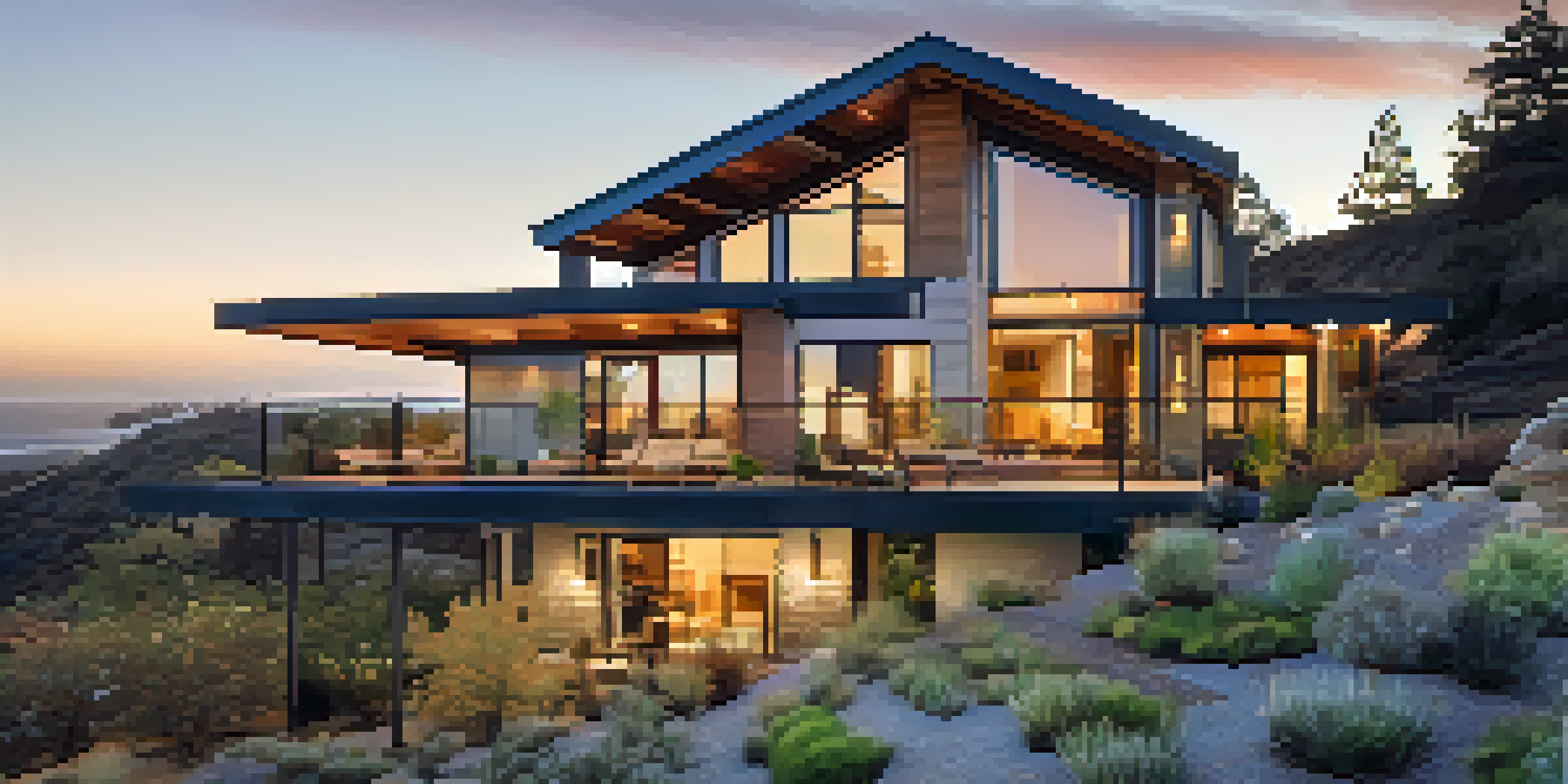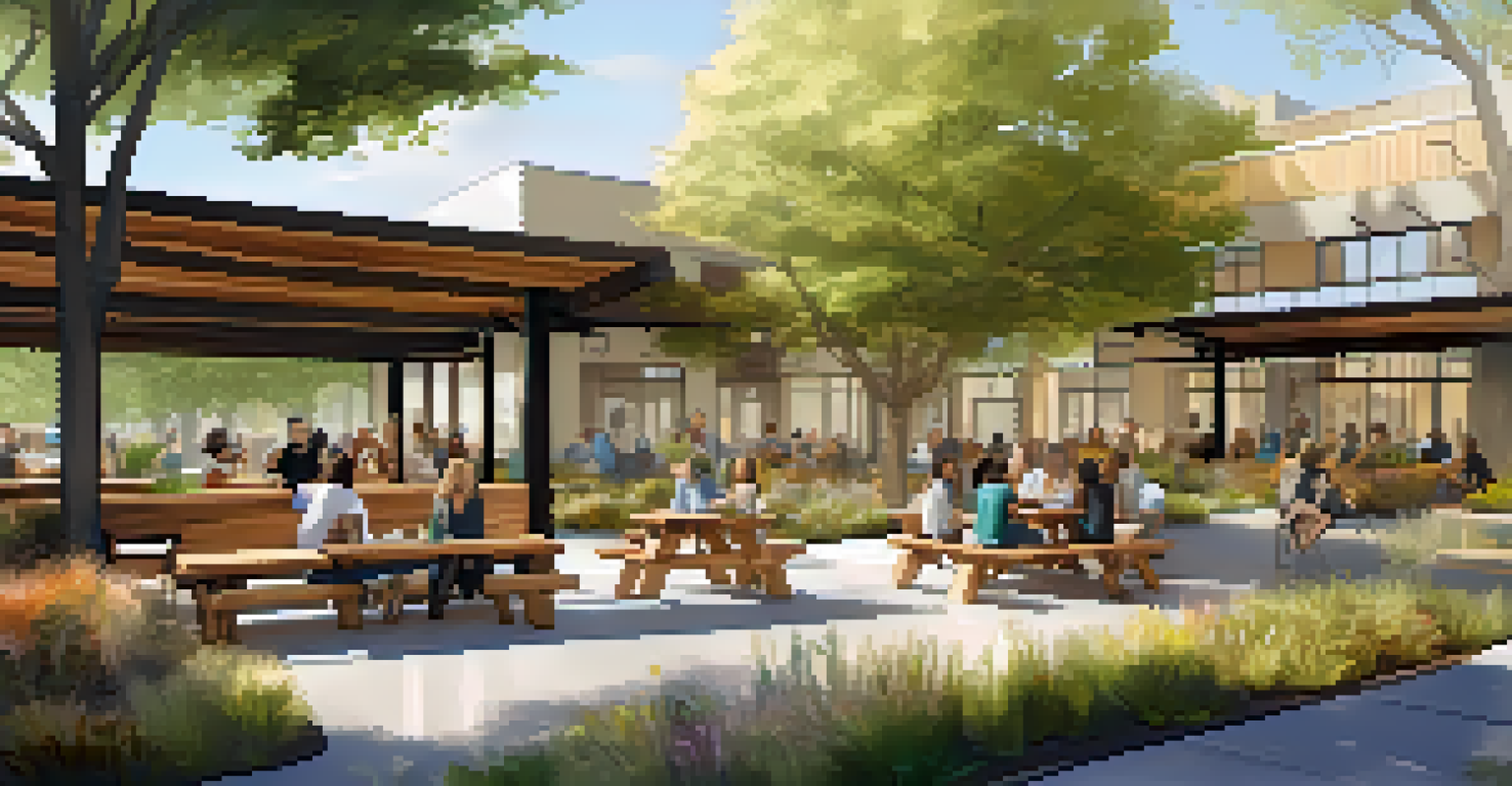Impact of California's Climate on Sustainable Architecture

Understanding California's Unique Climate Challenges
California's climate is a complex tapestry woven with coastal breezes, arid deserts, and mountainous terrains. This diversity brings unique challenges, including droughts, wildfires, and rising sea levels. Architects must navigate these issues when designing buildings that not only withstand but thrive in their environment.
The greatest threat to our planet is the belief that someone else will save it.
For instance, regions like Southern California often experience intense heat and limited water resources, pushing architects to prioritize water-efficient designs and materials. Meanwhile, coastal areas face the threat of rising tides, necessitating elevated structures and resilient landscaping. Understanding these challenges is essential for creating sustainable solutions.
Thus, recognizing the nuances of California's climate is crucial for architects. By adapting their designs to local conditions, they can enhance sustainability while ensuring that their buildings harmonize with the natural landscape.
The Role of Sustainable Materials in Architecture
Sustainable architecture relies heavily on materials that minimize environmental impact. California's climate encourages the use of locally-sourced and eco-friendly materials, such as reclaimed wood, bamboo, and recycled metals. These materials not only reduce carbon footprints but also promote energy efficiency.

For example, using insulated concrete forms can help maintain indoor temperatures, reducing the need for heating and cooling. Additionally, materials like cool roofing can reflect sunlight, further mitigating heat absorption. By choosing the right materials, architects can create structures that are both beautiful and environmentally responsible.
California's Climate Drives Design
Architects must navigate California's diverse climate challenges, such as droughts and wildfires, to create buildings that harmonize with the environment.
Incorporating sustainable materials is not just about aesthetics; it’s about creating a lasting legacy. As California faces climate challenges, the choice of materials becomes a vital part of the conversation on how to build responsibly.
Innovative Design Techniques for Energy Efficiency
Energy efficiency is at the heart of sustainable architecture in California. Innovative design techniques, such as passive solar design and natural ventilation, are becoming increasingly popular. These methods allow buildings to harness natural resources, reducing reliance on artificial heating and cooling.
Sustainability is not just about the environment; it's about creating a better quality of life for all.
For instance, strategically placing windows to maximize sunlight can significantly cut down energy use during the day. Similarly, incorporating shaded outdoor spaces can help keep indoor areas cooler during the scorching summer months. By embracing these techniques, architects can create more sustainable living environments.
Ultimately, energy efficiency is not just about cutting costs; it's about contributing to a healthier planet. As California continues to innovate in this area, the lessons learned can serve as models for sustainable architecture worldwide.
Water Conservation Strategies in Architecture
Water scarcity is a pressing issue in California, making water conservation a priority in sustainable architecture. By implementing strategies like rainwater harvesting and greywater recycling, architects can significantly reduce a building's water consumption. These practices are not just beneficial; they’re essential for long-term sustainability.
For example, incorporating rain gardens can help manage stormwater runoff while providing natural beauty to a property. Similarly, installing low-flow fixtures throughout a building can drastically lower water usage without sacrificing comfort. These strategies empower residents to live more sustainably.
Sustainable Materials Matter
Using locally-sourced and eco-friendly materials is crucial for reducing environmental impact and enhancing energy efficiency in architecture.
Moreover, designing landscapes that require minimal irrigation can further enhance water conservation efforts. As architects embrace these strategies, they contribute to a more sustainable future for California's communities.
The Importance of Community Engagement in Design
Sustainable architecture goes beyond individual buildings; it involves the communities they serve. Engaging local communities in the design process ensures that the final products reflect their needs and values. This collaborative approach fosters a sense of ownership and pride among residents.
For instance, involving community members in discussions about public spaces can result in designs that are not only functional but also culturally relevant. This practice helps create spaces that encourage social interaction and strengthen community ties. A building that resonates with its surroundings is more likely to be embraced by those who use it.
Moreover, community engagement can lead to innovative ideas that architects may not have considered. By listening to the voices of the community, architects can create designs that are not only sustainable but also truly representative of the people they serve.
Technological Innovations in Sustainable Architecture
Advancements in technology are revolutionizing sustainable architecture in California. From smart building systems to advanced materials, these innovations enhance energy efficiency and sustainability. For example, automated systems can optimize energy use based on occupancy, significantly cutting down waste.
Additionally, technologies like building information modeling (BIM) allow architects to visualize and analyze environmental impacts before construction begins. This foresight enables more informed decisions about design and materials, leading to better outcomes for both the environment and the budget.
Community Engagement Enhances Design
Involving local communities in the design process fosters ownership and ensures that buildings meet the specific needs and values of residents.
As these technologies continue to evolve, they promise to make sustainable architecture more accessible and effective. By embracing innovation, California architects can lead the charge toward a greener future.
The Future of Sustainable Architecture in California
Looking ahead, the future of sustainable architecture in California is bright yet challenging. Climate change will continue to impact design decisions, pushing architects to think creatively about resilience and sustainability. The need for adaptive solutions will only grow as environmental conditions evolve.
Moreover, as awareness of climate issues increases, so does public demand for sustainable practices. This shift in mindset encourages architects to prioritize green building strategies from the outset. The future will likely see even more innovative designs that integrate seamlessly with nature and promote sustainability.

Ultimately, the journey toward sustainable architecture in California is ongoing. By learning from the past and embracing new ideas, architects can contribute to a more sustainable and resilient future for generations to come.